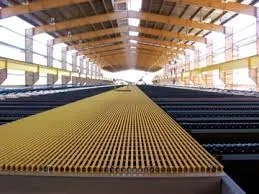
-
 Afrikaans
Afrikaans -
 Albanian
Albanian -
 Amharic
Amharic -
 Arabic
Arabic -
 Armenian
Armenian -
 Azerbaijani
Azerbaijani -
 Basque
Basque -
 Belarusian
Belarusian -
 Bengali
Bengali -
 Bosnian
Bosnian -
 Bulgarian
Bulgarian -
 Catalan
Catalan -
 Cebuano
Cebuano -
 China
China -
 China (Taiwan)
China (Taiwan) -
 Corsican
Corsican -
 Croatian
Croatian -
 Czech
Czech -
 Danish
Danish -
 Dutch
Dutch -
 English
English -
 Esperanto
Esperanto -
 Estonian
Estonian -
 Finnish
Finnish -
 French
French -
 Frisian
Frisian -
 Galician
Galician -
 Georgian
Georgian -
 German
German -
 Greek
Greek -
 Gujarati
Gujarati -
 Haitian Creole
Haitian Creole -
 hausa
hausa -
 hawaiian
hawaiian -
 Hebrew
Hebrew -
 Hindi
Hindi -
 Miao
Miao -
 Hungarian
Hungarian -
 Icelandic
Icelandic -
 igbo
igbo -
 Indonesian
Indonesian -
 irish
irish -
 Italian
Italian -
 Japanese
Japanese -
 Javanese
Javanese -
 Kannada
Kannada -
 kazakh
kazakh -
 Khmer
Khmer -
 Rwandese
Rwandese -
 Korean
Korean -
 Kurdish
Kurdish -
 Kyrgyz
Kyrgyz -
 Lao
Lao -
 Latin
Latin -
 Latvian
Latvian -
 Lithuanian
Lithuanian -
 Luxembourgish
Luxembourgish -
 Macedonian
Macedonian -
 Malgashi
Malgashi -
 Malay
Malay -
 Malayalam
Malayalam -
 Maltese
Maltese -
 Maori
Maori -
 Marathi
Marathi -
 Mongolian
Mongolian -
 Myanmar
Myanmar -
 Nepali
Nepali -
 Norwegian
Norwegian -
 Norwegian
Norwegian -
 Occitan
Occitan -
 Pashto
Pashto -
 Persian
Persian -
 Polish
Polish -
 Portuguese
Portuguese -
 Punjabi
Punjabi -
 Romanian
Romanian -
 Russian
Russian -
 Samoan
Samoan -
 Scottish Gaelic
Scottish Gaelic -
 Serbian
Serbian -
 Sesotho
Sesotho -
 Shona
Shona -
 Sindhi
Sindhi -
 Sinhala
Sinhala -
 Slovak
Slovak -
 Slovenian
Slovenian -
 Somali
Somali -
 Spanish
Spanish -
 Sundanese
Sundanese -
 Swahili
Swahili -
 Swedish
Swedish -
 Tagalog
Tagalog -
 Tajik
Tajik -
 Tamil
Tamil -
 Tatar
Tatar -
 Telugu
Telugu -
 Thai
Thai -
 Turkish
Turkish -
 Turkmen
Turkmen -
 Ukrainian
Ukrainian -
 Urdu
Urdu -
 Uighur
Uighur -
 Uzbek
Uzbek -
 Vietnamese
Vietnamese -
 Welsh
Welsh -
 Bantu
Bantu -
 Yiddish
Yiddish -
 Yoruba
Yoruba -
 Zulu
Zulu
fiberglass pipe insulation fittings
Understanding Fiberglass Pipe Insulation Fittings
Fiberglass pipe insulation fittings are an essential component in ensuring the thermal efficiency and energy conservation of heating, cooling, and plumbing systems
. These fittings, which are designed to fit snugly around pipes, help reduce heat loss or gain in a variety of applications, from industrial systems to residential HVAC installations.One of the standout features of fiberglass insulation is its outstanding thermal resistance, often characterized by a high R-value. This property is critical in maintaining the desired temperature in pipes, which can be particularly beneficial in preventing condensation and frost in cold environments. The insulation acts as a barrier, minimizing heat transfer through conduction, convection, and radiation, thus enhancing the overall energy efficiency of the system.
The manufacturing process of fiberglass insulation fittings involves creating a composite of fine glass fibers, which are then bound together with resin. This construction offers several advantages, including resistance to moisture, rot, and chemicals, providing durability and a long lifespan. Moreover, fiberglass is non-combustible, making it a safe choice for insulating pipes in various settings. This attribute significantly contributes to fire safety, especially in commercial and industrial environments where fire codes are strict.
fiberglass pipe insulation fittings

When installing fiberglass insulation fittings, precision is critical. The fittings must be cut and shaped properly to fit the specific pipe diameter and configuration. Inadequate fitting can lead to thermal bridging, which occurs when heat escapes through gaps in the insulation. This not only increases energy costs but also can lead to equipment failure or deterioration over time. Therefore, it is essential to ensure a seamless installation, often utilizing clamping mechanisms or adhesives designed for fiberglass materials.
Another important consideration is the fact that fiberglass insulation is lightweight and easy to handle, making it a favorite among contractors and DIY enthusiasts alike. While the installation process is straightforward, it's crucial to wear appropriate protective gear, such as gloves and masks, during handling to avoid skin irritation or inhalation of fine fiberglass particles.
Environmental sustainability is also a vital aspect of fiberglass insulation. Many manufacturers produce fiberglass products using recycled materials, and their energy-saving capabilities contribute to reducing greenhouse gas emissions. By improving the efficiency of heating and cooling systems, fiberglass insulation helps create a more sustainable future.
In conclusion, fiberglass pipe insulation fittings are an indispensable element in modern building practices. They provide an effective solution for thermal management needs, enhance energy efficiency, and promote safety in various applications. By investing in high-quality fiberglass fittings and ensuring proper installation, homeowners and businesses can secure substantial long-term savings while also contributing to environmental sustainability. Whether for a commercial facility or a personal home, fiberglass insulation provides a reliable and effective means of maintaining optimal temperature control.









